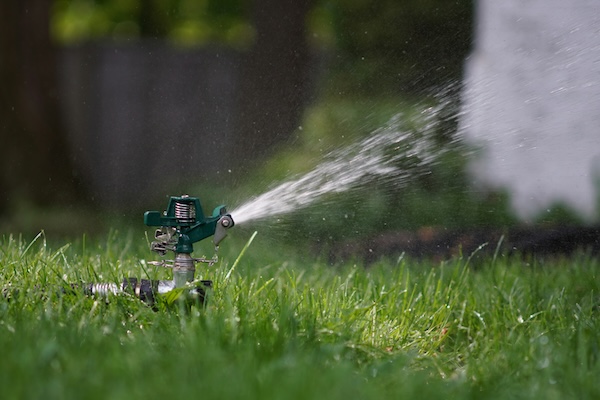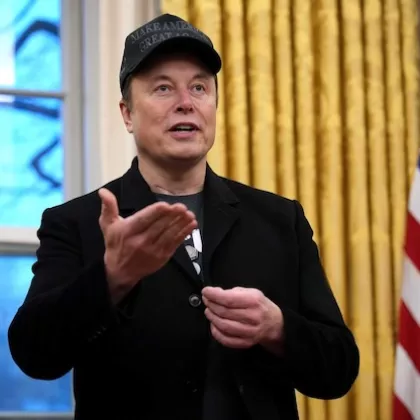Marketing environmental change

Marketing environmental change
March 27, 2024 | By Professor Kristina Brecko
In this blog post, Professor Kristina Brecko shares findings from her harm reduction field research to illustrate the power of strategic marketing.
Background
Amid historic drought conditions, the State of California launched an ambitious “Brown is the New Green” campaign in 2015 to encourage residents to reduce water consumption by letting their lawns go brown. From TV ads to highway billboards, the campaign reached far and wide. Water utility companies, faced with a fine if they did not comply with mandates to achieve a reduction in usage, joined the effort. To create an additional incentive, homeowners received rebates that covered all or most of the cost of turf removal.
As a PhD student at Stanford University at the time, I cared deeply about the conservation efforts happening around me. I couldn’t help but view the issue through a marketing lens, wondering which of the messages that government agencies and water utilities were broadcasting were moving the needle on conservation, if any.
It quickly became evident that residents who were most conservation-minded responded early to messaging, but those who were least engaged with conservation issues proved resistant to change. In collaboration with a team at Stanford, we set out to drive meaningful change.
Devising a Strategy
Campaigns like “Brown is the New Green” have a strong impact on those who are conservation-minded, helping to achieve significant reductions in water usage during severe drought years. The reality, though, is that some households are not inclined to conserve water because of their aesthetic preferences, lack of investment in conservation issues, or both. These households have a high potential for conservation, but most messaging campaigns do not persuade them to lower their water usage.
In “Marketing and Economics of Harm Reduction,” my colleague and I set out to supplement existing messaging campaigns with marketing of harm reduction solutions that might appeal to less conservation-minded households. We hypothesized that by taking different preferences into account, i.e., the aesthetic preference for a green lawn over the pro-social preference for reducing water consumption, we could incentivize a larger percentage of households than standard conservation-oriented marketing campaigns to make a change. We knew that smart irrigation devices were on the market, even if they were not yet in widespread use, and decided to test their effectiveness at reducing the water usage of the heaviest irrigators without cannibalizing the uptake of turf removal by those who would have otherwise done so.
Field Experiments
A smart irrigation device replaces a traditional sprinkler system, automatically adapts to watering needs throughout the year and temporarily shuts off irrigation when it has rained, will rain, or the soil is saturated enough from rain or past irrigation that the next cycle is not needed. This automation makes it easier for users to water more efficiently, especially in shoulder seasons when weather conditions are changing. Our research team formed partnerships with the Redwood City Water Agency and Rachio, a device with early penetration in Redwood City, to discover the device’s potential to increase efficiency.
We were aware of the possibility that smart irrigation devices could encourage people who weren’t watering much before to increase their usage. We were also concerned that if a household adopted this device, they would forgo the more impactful turf removal or brown lawn. Essentially, the effectiveness of our harm reduction approach depended on which kind of household adopted the smart controller, how they used it, and what they would have done had they not adopted it. To understand overall changes in welfare, we were also interested in whether the adoption of the device would lead to trade-offs in aesthetic benefits—that is, whether upon adoption, households would retain the aesthetic benefit of the green lawn or face lawn degradation.
For our first field experiment, we incentivized a selection of top-consumption households to adopt the device by offering four levels of discounts, from 10% to 80%, off the standard $250 price. Then, once the device was installed, we measured a change in water usage for each segment. We found that higher discounts and professional installment led to higher adoption, but in terms of reduction, we couldn’t get a large enough sample size to establish a firm link.
For our second experiment, we confronted the sample size issue by running a marketing campaign that offered the device for free to half of the 20,000 households in Redwood City, California. 387 households installed the device, enabling us to examine the impact on water usage.
We found that the adoption of the device was highest among the following:
1) High-irrigation households;
2) Households that decreased their usage during the drought but returned to previously high levels afterwards; and
3) Conservation-oriented households
In terms of the impact on water usage, we found that nearly all the reduction in water usage came from the high-irrigation households, while lower irrigation households saw no change in their usage upon adoption of the device. The savings from these high-irrigation households were substantial: A high-irrigator household that adopted the device conserved the same amount of water as an average Redwood City resident would use indoors in a year, while also recovering the cost of the $250 device in six months.
The last piece of the puzzle was to measure whether our campaign motivated significant substitution away from turf removal, the most impactful water conservation action in our context. To speak to this, we used satellite imagery-based data that tracks the vegetation in individual households’ yards. We found no change in the size and greenness of the landscape, suggesting that our campaign did not, in fact, induce households who would have otherwise taken out their lawn to forgo this most impactful solution.
Simply by appealing to heavy users in a way that considered their preferences, we reached a solution with long-lasting individual and social benefits.
Broader Implications
Our harm reduction approach may be fruitful in tackling other societal and environmental issues where measuring the impact of interventions on utility and welfare is challenging. To offer recommendations with broad application, my co-author and I propose a framework for assessing the overall success of a harm reduction approach in similar contexts. The framework relies on four metrics, which together reflect societal welfare improvements better than a simple aggregate consumption reduction benchmark:
1) The extent to which heavy consumers adopt the solution
2) The extent to which harmful consumption decreases for heavier consumers
3) The extent to which formerly abstaining consumers are drawn into consumption
4) Whether or not benefits of consumption are decreased
Whether it’s replacing meat with alternative proteins, replacing an SUV with a more efficient EV SUV, or a cigarette with an e-cigarette, this framework can apply to a wide variety of complex issues.
For someone who cares about making positive changes out in the world, our framework is not a one-size-fits-all plan for success—but it’s a good place to start.
Kristina Brecko is an assistant professor of marketing at Simon Business School.
Follow the Dean’s Corner blog for more expert commentary on timely topics in business, economics, policy, and management education. To view other blogs in this series, visit the Dean's Corner Main Page.












